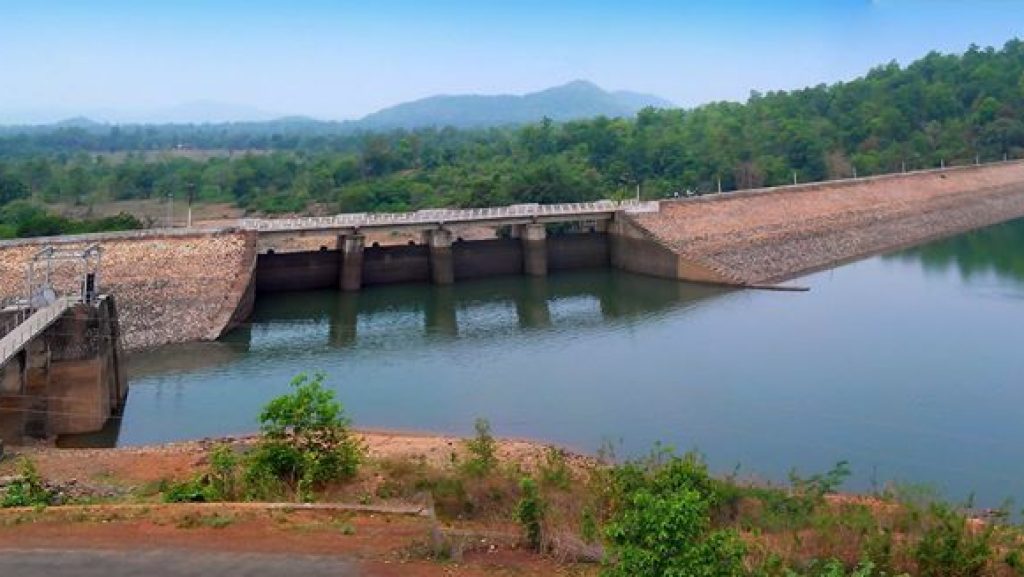Kamakhyanagar: Years ago, tribal farmers of Karagola panchayat in Dhenkanal used to suffer huge loss when water gushing from nearby hills swept away their crops in the monsoon. In the dry seasons, they could not have enough water to raise other crops and vegetables.
But everything turned around after Dandadhar dam was built in the area. The dam has become a lifeline for the tribal farmers of Kankadahada area by boosting the agriculture as well as strengthening economic backbone of the residents. By damming up the river water, thousands of hectares of farmlands are being irrigated in the tribal dominated hilly area.
Besides, the dam has provided potential for tourism sector in the area.
The Dandadhar dam was built across Ramial river near Budhibil village under Kankadahada block. The dam and its greenery provide scenic pleasure for tourists.
In the seventies, Chief Minister Nandini Satpathy decided to bolster the agriculture sector in the backward areas.
With her efforts, two dams were planned— one at Kankadahada block and other at Parjang block.
In 1975, the construction of the two dams was initiated.
Ramial river flows amid hills. Near it, is the sprawling Ranjagad reserve forest while Kerjola revenue forest is spread for kilometers to the west of the river.
A 424-metre-high dam, Dandadhar, was laid across the river. People of some villages like Rekuti Nuagan, Biripal, Kaliahata and Kaibasa of Keonjhar district were displaced for the dam.
Scores of displaced families were rehabilitated in four colonies at Kantapal while 813 families were rehabilitated in five colonies at Dadaraghati. In 1983, the dam was made full-fledged.
The dam, sprawling over 328 square km, has water retaining capacity of 600 cusec/metre. There are four gates to release water from the dam while water is supplied through two main canals. Farmlands in far-flung areas get irrigational coverage through sub-canals.
In Kharif season, 6,128 hectares of farmlands are irrigated while 3,200 hectares are irrigated in Rabi season.
The left canal irrigates farmlands at Kargola, Kankadahada, Balikuma, Maruabila, Raibola, Birashala, Makuachateni, Batagan under Kankadahad block and Kanpura (Kamkshyanagar block) while the right canal irrigates farmlands at Kantapal, Kandara and some other villages.
However, over years, the dam has been losing its water retaining capacity, as a result of which water is not reaching to the targeted areas.
Farmers demanded that the dam should be de-silted and restored so as to expand its irrigational coverage.
Rajesh Dehury, a local, said, “Dandadhar dam acts as a lifeline in the tribal-dominated block of Kankadahada. Farmers raise crops throughout the year by using the dam water. Besides, the dam draws a huge number of tourists during the picnic season. The government can develop the peripheral area of the dam with tourism infrastructure so as to boost ecotourism in the tribal pocket.”
Balabhadra Sahu, a former ZP member said: “Dandadhar dam is the outcome of years of efforts by our forefathers. Though 45 years have passed since the dam was built, the miseries of the displaced people have not been removed. The canal laid for displaced people is of no use. The government needs to pay heed to the problem.”
Assistant engineer of the dam, Sarat Chandra Sahu, said: “Dandadhar is gradually getting silted, resulting in fall of its water retaining capacity. It needs to be dredged to increase its water retaining power. This place has enough potential to boost tourism. It should be developed for that purpose.”
PNN

